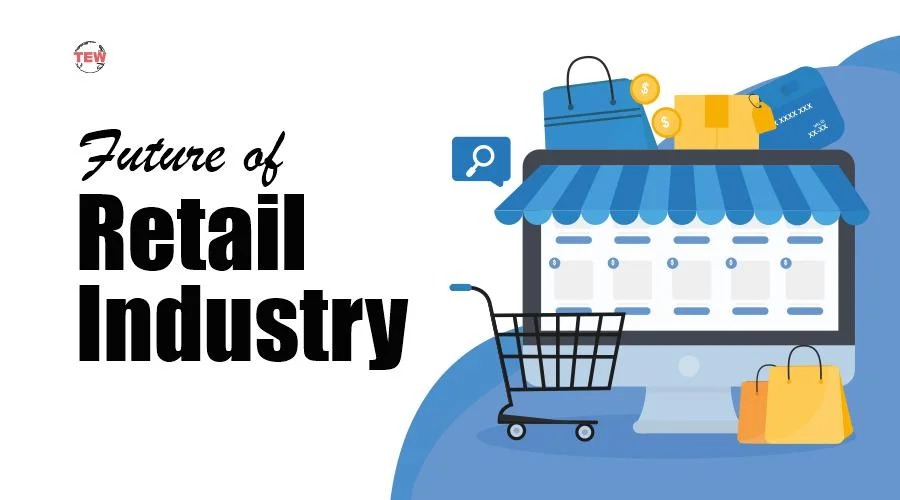
Introduction
The retail industry sector plays a major role in connecting products to everyday consumers. From your local retail shop to major online platforms, retail businesses are involved in selling goods and services directly to the public. Whether you’re buying a T-shirt, electronics, or groceries, you’re engaging with this vast sector. In this article, we’ll explain how the retail industry works, the differences between wholesale vs retail, and the importance of pricing terms like retail list price and suggested retail list price. With a simple tone and real-life examples, you’ll get a full understanding of this important sector.
What Is the Retail Industry Sector?
The retail industry sector includes all businesses that sell products or services directly to the final consumer for personal use. It’s one of the largest sectors in the world economy, generating trillions in revenue and employing millions. The sector covers a wide variety of business types, including physical stores like grocery shops, clothing outlets, and electronics stores, as well as online retail platforms.
Retailers buy products from wholesalers or manufacturers and then sell them in smaller quantities to customers. Their role is essential, not just in product distribution but also in customer service, market feedback, and trend-setting.
Wholesale vs Retail: Key Differences
Understanding the difference between wholesale vs retail is important for anyone entering the business. Wholesalers sell products in large quantities, usually to retailers, not directly to the public. They offer lower prices per unit because their customers buy in bulk.
Retailers, on the other hand, buy from wholesalers or manufacturers and sell individual units to customers at a higher price. The price difference, known as the markup, helps cover operating costs such as rent, staff wages, and marketing, while also making a profit.
For example, a wholesaler might sell 100 shirts to a retailer at $5 each. The retailer then sells each shirt individually at $15. This markup reflects both the costs of running a store and the added value of customer service, packaging, and convenience.
How Retail Pricing Works: Retail List Price and Suggested Retail List Price
Pricing plays a vital role in the retail industry sector. It directly affects sales, customer trust, and competitiveness.
The retail list price is the official price a store sets for a product. It is the price visible on tags in a physical shop or on a product page online. This price may include a markup from the cost the retailer paid when buying the item wholesale.
In contrast, the suggested retail list price is provided by the manufacturer. It’s a recommendation for how much the product should be sold for at the retail level. While retailers are not obligated to follow it, many use it as a baseline when setting their final prices. However, retailers often adjust this price to reflect market demand, store location, or promotional strategies.
For instance, a manufacturer might suggest a retail list price of $100 for a jacket. A retailer located in a high-end shopping district may sell it for $120, while another in a small town might reduce the price to $90 to stay competitive.
Importance of the Retail Industry Sector in Today’s Economy
The retail industry sector plays a crucial role in shaping the economy and influencing consumer behavior. It’s not just about buying and selling products—it’s about fueling growth, creating employment, and driving innovation. Retail connects manufacturers to end consumers and keeps the flow of goods steady across supply chains. As people’s needs and lifestyles evolve, the retail sector adapts quickly to meet those changes.
In today’s digital age, retail has expanded beyond physical stores. While the traditional retail shop still holds importance, many businesses now combine in-person and online sales to reach a broader audience. This blend of e-commerce and offline shopping helps businesses provide better customer service and improve convenience for buyers. It also opens new opportunities for small retailers to grow by tapping into online marketplaces and delivery networks.
Retail also reflects real-time changes in consumer preferences. For example, if there’s a growing demand for eco-friendly or organic products, retailers will respond by stocking these items. In turn, this influences manufacturers to produce more sustainable goods. In this way, the retail sector doesn’t just serve the market—it helps shape it.
Role of Thokmandee in Retail and Wholesale
One important part of the broader retail and wholesale network, especially in South Asian countries, is the Thokmandee. The term “Thokmandee” refers to traditional wholesale markets where goods are sold in bulk at lower prices. These markets are vital to the supply chain, acting as a link between manufacturers and smaller retailers.
In a Thokmandee, shop owners, distributors, and small business owners purchase large quantities of goods to resell in their shops. From groceries and textiles to electronics and household items, Thokmandees stock a wide variety of products. Prices here are typically lower than in retail shops, which allows retailers to apply their own retail list price when selling to customers for profit.
Thokmandees are often located in central marketplaces within cities or towns and serve both urban and rural areas. They are especially valuable to small and medium retailers who can’t afford to buy directly from large manufacturers or importers. By buying from a Thokmandee, these businesses can keep costs low while staying stocked with in-demand items.
Although modern wholesale supply chains and digital ordering systems are growing, Thokmandees remain a vital part of the economic landscape. They offer flexibility, quick access to products, and personal relationships that are still important in many communities. In places where internet access is limited or e-commerce is still developing, Thokmandees continue to be the backbone of retail distribution.
How Retailers Can Succeed: Key Strategies
To succeed in the retail industry sector, businesses need more than just a good product. Understanding pricing, customer behavior, and industry trends is crucial.
One important strategy is pricing effectively. Begin by considering the suggested retail list price, but don’t be afraid to adjust it. Research your local market and understand what customers are willing to pay. Transparency with the retail list price helps build customer trust and can influence buying decisions.
Another strategy is understanding the benefits of wholesale purchasing. Retailers can save money by buying in bulk from wholesalers. But it’s equally important not to overstock items that might not sell quickly. Proper inventory management ensures that capital isn’t tied up in unsold products.
The layout and presentation of your store also matter. In a physical retail shop, products should be arranged in a way that makes browsing easy and enjoyable. Online, product pages should be clear, with accurate descriptions and pricing details.
Retailers should also track trends. Knowing what products are in demand, what times of year sales peak, and which products are underperforming can help make smarter decisions. Digital tools like point-of-sale systems and inventory trackers make it easier to gather this data and take action quickly.
Finally, blending online and offline experiences can help expand reach. Even small retail shops can benefit from creating a simple e-commerce website where customers can browse, compare prices, and place orders.
Real-World Example
Consider a local clothing shop. They purchase jackets from a wholesaler at $30 per unit. The manufacturer’s suggested retail list price is $70. After considering local market demand and competitor pricing, the retailer decides on a retail list price of $65. They promote the jackets both in-store and online and offer a 10% discount to encourage early sales in the winter season. This pricing approach helps maintain a healthy profit margin while remaining competitive.
Conclusion
The retail industry sector is a dynamic and essential part of the economy. From understanding wholesale vs retail differences to mastering pricing strategies using retail list price and suggested retail list price, success in retail relies on smart planning and staying informed. Whether you operate a small shop or plan to expand online, focusing on customer needs, market trends, and pricing strategy will help your business thrive. As the industry continues to evolve, adapting to new challenges and technologies is the key to long-term success. Want to learn more about managing your store or setting prices effectively? Explore our related posts and guides to keep growing your knowledge.
FAQs
What is the main role of the retail industry sector?
The retail sector connects producers with consumers by selling products and services directly for personal use.
What is the difference between wholesale and retail?
Wholesale sells in bulk to businesses at lower prices, while retail sells in smaller quantities to consumers at higher prices.
What does retail list price mean?
It’s the price shown to customers in-store or online. It includes the retailer’s markup and operational costs.
What is the suggested retail list price?
This is the manufacturer’s recommended selling price for retail. Retailers may follow or adjust it based on market factors.
Can retailers change the suggested retail list price?
Yes. Retailers often modify the suggested price to match local competition, target audiences, or seasonal demand.





